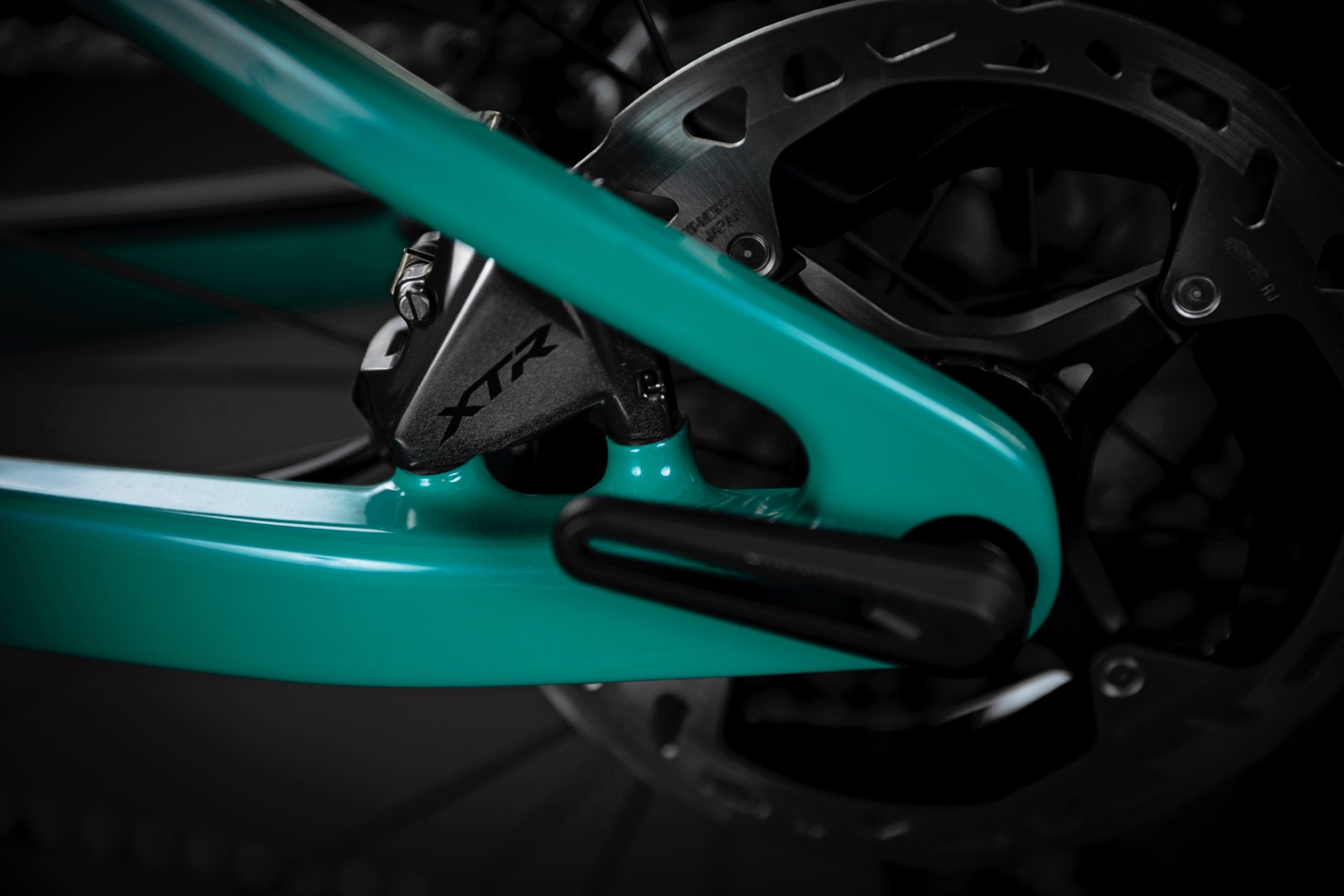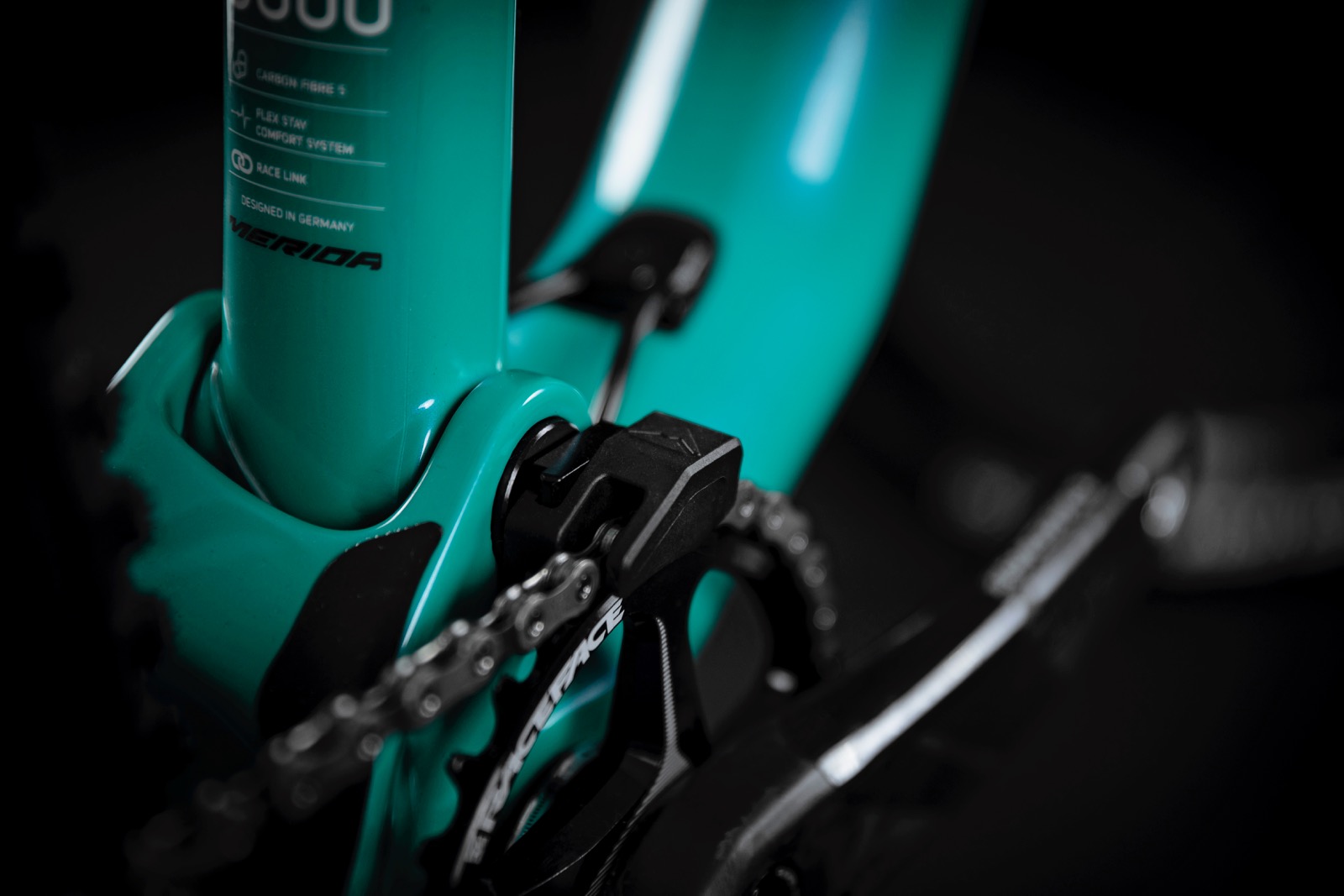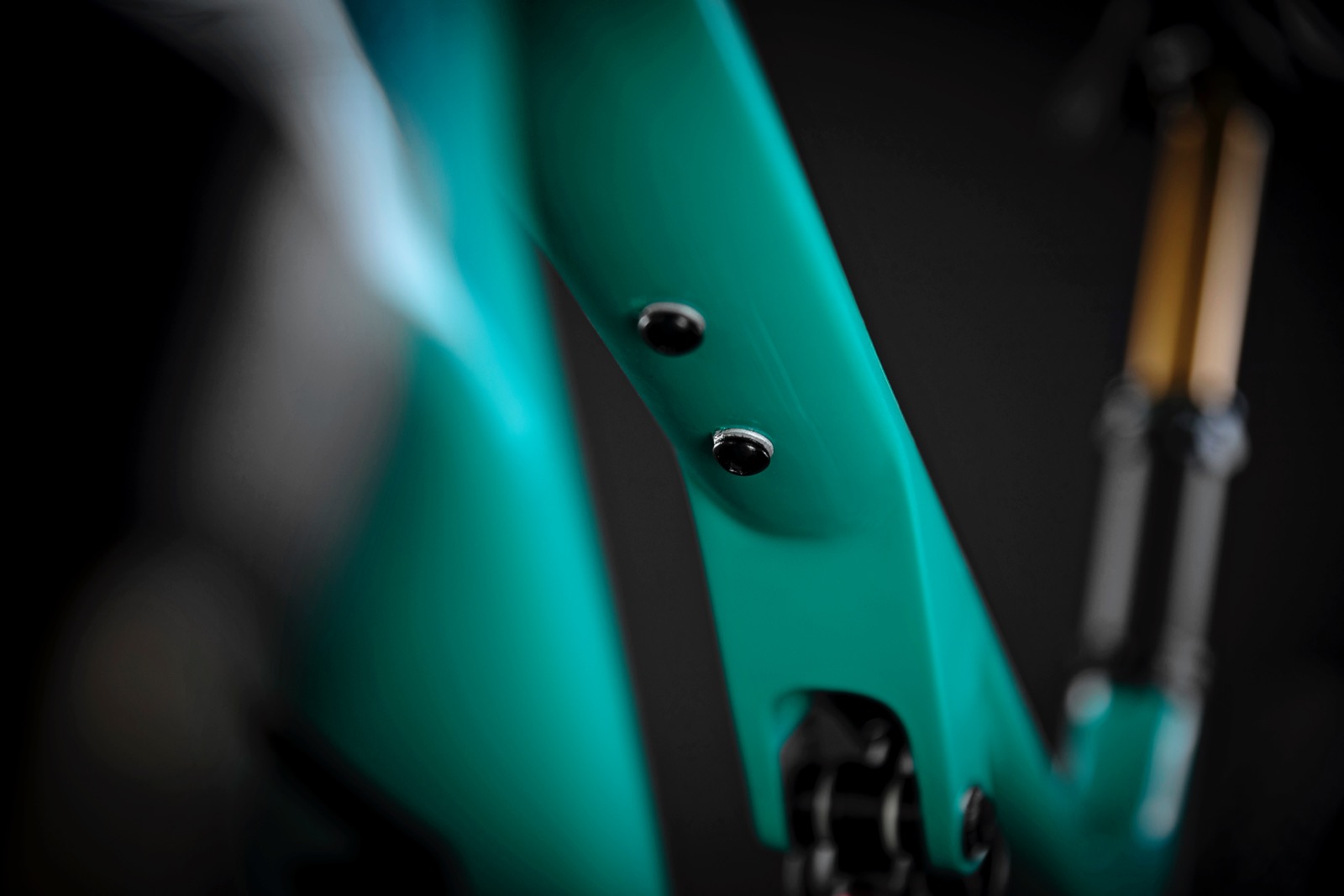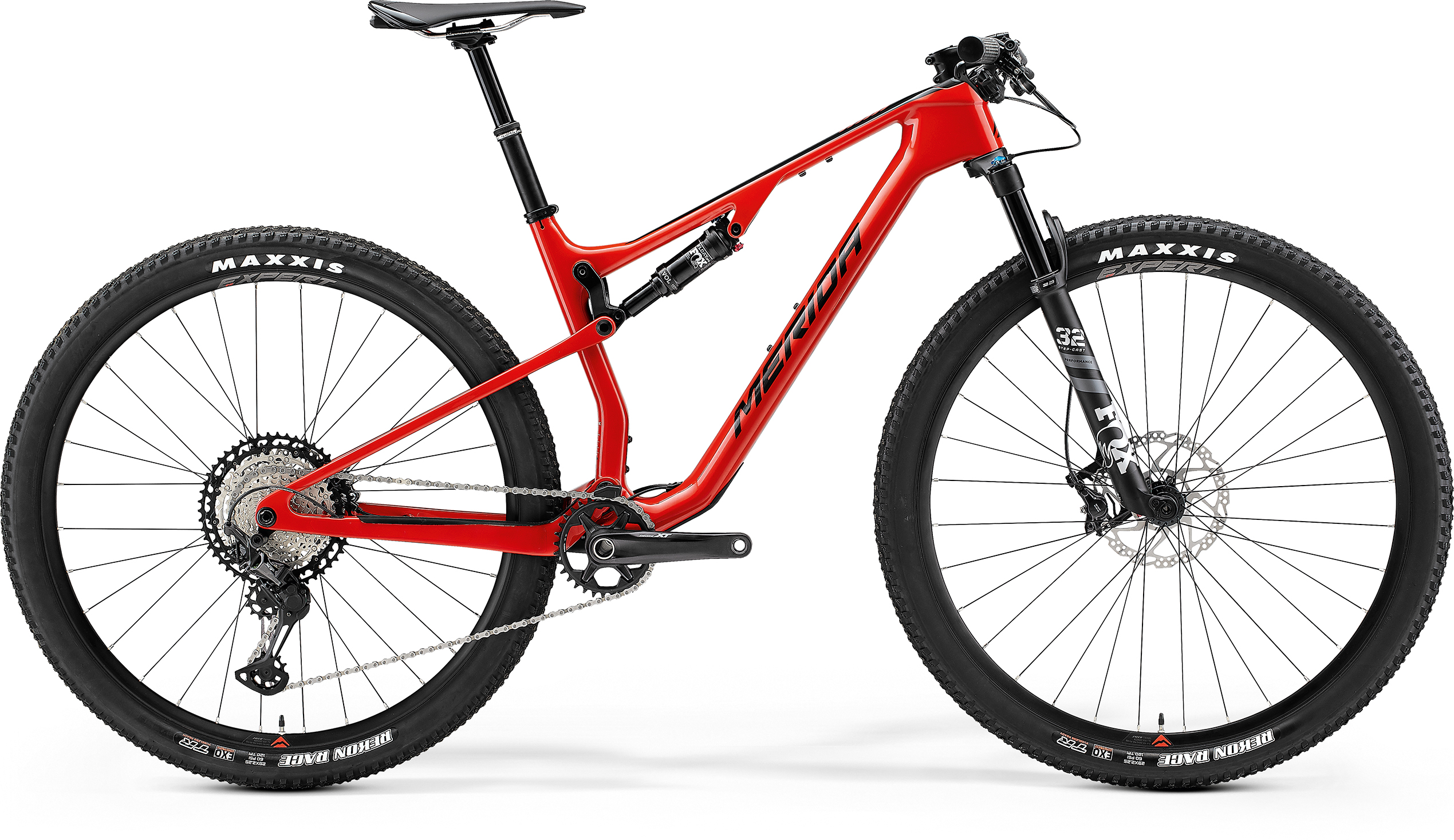Merida's new Ninety-Six to light up race tracks and trails
Merida have overhauled the Ninety-Six to make a modern cross-country bike and a downcountry rig - all in one frame design.
Merida have pushed the whole world of eMTB with their eOne-Sixty and eOne-Forty platforms. The investment in making one of the most popular eMTB platforms in the world did come at an expense – and that was the Merida-Multivan World Cup XCO Team. While the Merida Ninety-Six was still a super-competitive bike, many were left wondering if Merida would be pursuing further development in this area, especially as Gunn Rita Dahle-Flesja had retired, as had Jose Hermida. Regardless, Merida have just released the all-new Ninety-Six RC and Ninety-Six, showing that their finger is on the pulse for the demands of cross-country, marathon racing, stage racing and down-country riding.
Merida have completely overhauled the Ninety-Six, make the Ninety-Six RC which is a 100mm front and rear full-suspension bike, and the Ninety-Six, which has 120mm travel fork, more aggressive tyres and a stronger front brake. Merida have listened to the demands of riders like Jose Hermida, who is still very active with Merida, asking for two water bottle cages in the main triangle. Merida also studied what cross-country racing is all about now, and that's why you'll see such a dramatic change in the geometry of the Ninety-Six. With XCO courses being built with very demanding terrain, with super steep sections and committing lines, geometry needs to allow for stability on the descents, with agility in technical terrain and great climbing prowess.

Merida originally launched the Ninety-Six platform in 2008, and while it has changed design plenty of times since then, it has also hauled in plenty of major race wins and titles. The new model looks set to carry on that tradition.
Geometry on the new Merida Ninety-Six RC and Ninety-Six
Merida went deep into modern XC geometry here, with a 76.5 degree seat angle, and 68.5 degree head angle on the Merida Ninety-Six RC. Reach is 473mm on a large, with a wheelbase of 1169mm and a chain stay length of 435mm. Add in 45mm of bottom bracket drop and the 100mm bike should be planted and stable, without being a bus in the corners.
The Ninety-Six model uses the same frame, and the same 190×42.5mm stroke shock sizing, as the rear travel remains at 100mm. But with 120mm travel forks, the reach, seat and head angles are impacted. The seat angle goes to 75 degrees on most sizes, with a 67 degree head angle. That's a full 3 degrees slacker than the previous Ninety-Six! The wheelbase pushes out to 1180mm in a large and the reach shortens to 460mm, while the BB drop is reduced with the longer fork, coming in at 36mm drop.

With two variants on the one frame, the Merida Ninety-Six platform joins the likes of the Orbea Oiz and Norco Revolver for offering race and trail variants – of note the Norco Revolver and Orbea Oiz do offer different stroke length rear shocks to bump the rear travel to 120mm as well. But the frames remain the same to the 100mm variants – just like the new Merida.
Frame details on the new Merida Ninety-Six RC and Ninety-Six
Along with updated geometry, the new Merida Ninety-Six models are available in a few frame varieties, with the top RC 9000 CF5 frame tipping the scale at only 1,695 g for the medium size frame. The CF4 frames are about 150g heavier and pretty much the same stiffness.
Compared to the last generation, the leverage ratio on the new Ninety-Six is more progressive. The progression is more than 7% to match the small air chambers cross-country shocks. With a higher ratio at the beginning of the travel the suspension is more sensitive to small impacts, but the increased progression gives it great support in the mid-travel. For the rider, this means that the suspension can be very supple for stutter bumps and keeping the rear wheel glued to the ground when giving it the beans, but you won't be bobbing around like crazy thanks to the ramp up in the midstroke and the inherent qualities of air shocks. It will also make it really hard to bottom out the Ninety-Six.
Merida have also thrown out the rear pivot, just like Specialized, Canyon, Cannondale, Trek and many others have. The new P-FLEX system with no seat/chainstay pivot point has a positive effect on weight as well as stiffness. Thanks to the properties of carbon, and the design of the frame, it acts like a leaf spring with no impact on durability. The rear brake mount is flat mount, as it takes up less room and lets a flex stay do its job.

On the suspension front, Merida utilise dual remote lock out, and all models come with a SRAM Twistlock remote, keeping the dropper lever completely clear of being mistake for the lock out.

Merida have also worked hard on cable routing, with ports atop the headset cover, like the Canyon Exceed. The rear shock lock out runs along the top tube and into a custom Fox shock. The head of the 190×42.5mm Fox Float has the lockout cable entry up the top (and hidden in the frame) with rebound 180 degrees around and accessible on the fly if needed. This is the same configuration as the Orbea Oiz, and it allows a cleaner look but also greater clearance for putting a bidon in and out of your cage.

The cable outer and rear brake hose is inside the down tube, and exits at on the top side ahead of the 73mm BSA bottom bracket shell. This accumulates less trail grime. The derailleur outer threads into the chain stay, and Merida worked hard to make a frame design that gave greater tyre clearance (a 2.3" tyre fits fine) while not making the chain stay so narrow that it becomes a weak point.

Further back, Merida have employed a SRAM Universal Derailleur Hanger (UDH) for the 148x12mm drop out. The more of these, the better! Merida have also got a chain guide which can accept a 38t chain ring as a maximum. If you can push it, the Merida can fit it.

For those who race, you'll like the fact that all hardware on the frame uses a T30 single-sided bolt, and the hardware is larger than before. So it's a single tool for adjustment and service, and it's likely more durable and stiffer as well.
Big news for those who go long, who live in a hot climate, or who just prefer to carry plenty on their bikes, is dual bottle cage capacity. Each frame can fit two 0.75mL bidons, or a 0.75mL and a 500mL on the small size.

With both cages inside the main triangle they are secure and easy to access. Merida also have a cargo mount on the underside of the top tube, behind the head tube. There are a bunch of accessory mounts for these and they're a great way to carry items like a spare hanger, CO2 cartridges, or a spare tube.

What models are there?
Here in Australia, we will have four bikes available.
Merida NInety-Six RC 9000 | RRP $9,999
Anthracite (Black/Titan) | available from mid Jan 2021

– CF5 frame
– Shimano XTR M9100 group set
– Race Face carbon crank
– Fox 32 SC Factory fork
– Fox Factory Transfer dropper post
– DT Swiss XRC 1501 wheels
– Merida 740mm carbon bars
Merida Ninety- Six 8000 (120mm fork) | RRP $8,699
Anthracite (Black/Titan) |available from July 2021

– CF4 frame
– SRAM GX Eagle 12speed, 10-52t cassette
– Carbon crank set
– Shimano XT brakes, 4-pot front, 2-pot rear
– SID 35mm fork
– SIDLuxe shock
– 170mm dropper
– Reynolds TR309 carbon wheels and Maxxis 2.3" Minnion tyres
Merida Ninety-Six RC XT | RRP $6,399
Silk Golden Red (Black) | available from Feb 2021

– CF4 frame
– Shimano XT M8100 group set
– Fox Performance 32 SC fork
– Merida dropper post
Merida Ninety-Six RC 5000 | RRP $5,599
Orange (Black) – available from Feb 2021

– CF4 frame
– Shimano Deore/XT 12-speed drivetrain
– Shimano SLX brakes
– RockShox SIDLuxe rear shock
– Merida dropper post
We've got a Ninety-Six coming next year for test, and we can't wait! They look like a very thorough overhaul, and the 120mm fork option should provide a great stiffness boost for more aggressive riding and larger riders.
For more details go and visit your Merida dealer.
Keen to always get our latest stories and reviews? Then make sure you subscribe!







